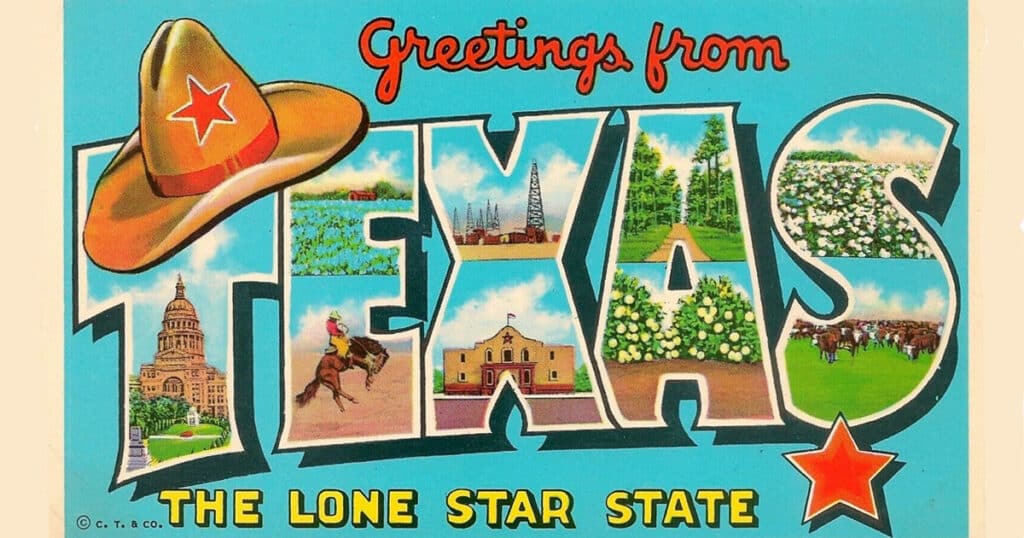
Journalism, Universities, and the Containment of Ideology
During the Trump years, the mainstream media posed as the beleaguered defender of hard facts and unvarnished truth in the face of a ruthlessly mendacious president. The gap between the journalists’ self-righteousness and their disreputable performance showcased the lengths to which educated people will go to delude themselves and the public to achieve partisan ends.
According to former CNN editor-at-large Chris Cillizza, former President Donald Trump’s denunciations of the mainstream media for flooding political discourse with “fake news” constituted an “assault on truth – and the role a nonpartisan media plays in society” that will stand as his most “lasting, damaging legacy.” It did not occur to Cillizza or Trump’s legion of critics at CNN, the New York Times, the Washington Post, and elsewhere that the 45th president’s condemnations of fake news presupposed a media that properly aims at honesty and objectivity. The critics also have been oblivious of how their frenzied coverage of Trump combined with their shielding of Joe Biden has done more to undermine trust in the mainstream media than Trump’s vituperative attacks on them.
During his candidacy and presidency, Trump routinely exaggerated, vilified, and presented falsehoods as facts. But he had been doing that for nearly four decades of a flamboyant life lived in the public spotlight. The billionaire real estate developer and businessman, tabloid regular, and long-running reality-TV star was a known quantity. While journalists never tired of earnestly refuting Trump’s hyperbole and tall tales, his supporters delighted in his wild broadsides against what they regarded as both parties’ self-serving elites.
This is not to approve of Trump’s whoppers and his steady stream of invective. They sowed division and thwarted serious discussion. However, his well-established reputation as an incorrigible hustler undercuts journalists’ overwrought assertions that his presidency presented a unique assault on truth.
The mainstream media’s own exaggeration, vilification, and presentation of falsehoods as facts is another story. That’s not only because the media styles itself a truth teller. Accurate reporting – particularly given politicians’ well-known penchant for omitting, embellishing, and dissembling – is essential to enabling the public to cast votes responsibly.
In June 2015, when Trump announced his White House run, many still believed that along with other major news outlets, the New York Times sought, as Times publisher Adolph S. Ochs announced in 1896, “’to give the news impartially, without fear or favor, regardless of party, sect, or interests involved.” The mainstream media’s conduct during the Trump years, however, not only repelled conservatives but also disabused independent-minded readers of the belief that editors, reporters, and columnists at the nation’s most prestigious news organizations served the public by fostering an informed citizenry.
The mainstream media, not least the New York Times, hyped the thoroughly discredited Steele dossier and the counterfeit Russia collusion accusations. They fell for the Jussie Smollett hoax and the Covington boys slander. They smeared Judge Brett Kavanaugh in a vain effort to block his confirmation to the Supreme Court. Along with government and the academy, they amplified progressive opinion and suppressed or demonized dissenting views during the COVID-19 pandemic, not least concerning the virus’s origins. And along with the FBI and Twitter as well as former intelligence officials, they discredited or hid from public view the New York Post’s accurate reporting in the weeks leading up to the 2020 presidential election about the contents on Hunter Biden’s laptop, which strongly suggested influence peddling by the former vice president and Democratic presidential nominee’s son.
No one who has followed the sad decline of America’s universities should be surprised by the debasement of the establishment media, many of whose members graduated from the nation’s leading institutions of higher education. Long before Donald Trump’s presidency, professors, particularly in the humanities, championed the notion that morality itself is fake. That facts are malleable and a matter of perspective, that objectivity is an illusion, and that truth – particularly concerning justice and faith – is socially constructed, are, pardon the expression, truisms of university culture reaching back at least 70 years.
From the 1950s to the early 1980s, the reigning dogma on campus was moral relativism – the belief that since morality is a creature of culture and history, no rational standard exists for assessing rival moral claims. The conventional wisdom held that moral relativism justified pluralism, toleration, and equality: If no moral outlook or judgment was superior to another, why shouldn’t all ways of life be welcomed? The answer is that by moral relativism’s own principle there is no ethical requirement for the strong to refrain from subjugating the weak.
The postmodernism of the late 1980s, 90s, and the early 21st century heightened the contradiction. It offered a more flamboyant moral relativism coupled with a more strident progressivism. Postmodernists maintained that Western civilization – its literature and fine arts, philosophy, and religion, along with its social practices and political institutions – were little more than crystallizations of power relations. At the same time, postmodernists aspired to liberate individuals from the allegedly all-encompassing structures of oppression erected by Western civilization. But having established to their own satisfaction that high-minded talk of reason and justice masked the will to dominate, postmodernists were unable to explain why human beings deserve freedom and, once attained, what they should do with it.
Postmodern moralism has been succeeded by the doctrinaire woke progressivism that sunk deep roots within our universities. Woke progressivism promulgates identity politics, which divides the world into the deserving oppressed and their shameful oppressors. Assuming the falseness and wickedness of traditional morality but surreptitiously exploiting widespread commitments to fairness and equality, woke progressivism’s many adherents in the academy – as well as in the professions, corporations, and government – avidly allocate benefits and burdens based on race, ethnicity, and gender.
Moral relativism, postmodernism, and woke progressivism suffer a common incoherence. Their ideas entail that morality is a delusion. Yet they praise, condemn, and enforce their own rigid judgments as if they had exclusive access to the objective facts and had grasped the unimpeachable truth about justice.
This sensibility, at once libertine and authoritarian, suffuses the establishment press corps. Posing as fearless guardians of the people’s right to know, many of its members propagandize for partisan gain while raging against Donald Trump as a mortal threat to the public’s respect for reality. One might think that human nature would revolt against such blatant self-deception. Unless, that is, one had read “Ideological Fixation: From the Stone Age to Today’s Culture Wars,” by my friend and frequent sparring partner Azar Gat.
A distinguished military historian and Tel Aviv University professor of political science, Gat draws on enormous cross-disciplinary learning to examine the many facets of the very human tendency – especially strong among intellectuals – to band together in tribes united by, and armed with, simplified but all-encompassing moral and political frameworks. For the most part descriptive, his book explores ideological thinking’s origins in the mind’s structure and limitations as elaborated by Kant and post-Kantian philosophers, and the “natural propensities” and “deep emotional and behavioral proclivities” as explained by evolutionary theory. According to Gat, “Ideology consists of cherished normative prescriptions as to what is just and how social reality should accordingly be shaped, together with an interpretive roadmap indicating how these normative prescriptions can be implemented in the real world.” He also reviews the three great ideologies – liberalism, socialism, and fascism – that have shaped modern history. And he scrutinizes the ideological pressures that deform debates in America, Europe, and Israel about such hot-button topics as Western guilt, nations and nationhood, and gender and sexual behavior.
Belying his positivist insistence on the strict distinction between facts and values, Gat’s analysis is inspired – and inflected – by a laudable determination to improve awareness “that Reality is complex and that normative questions involve tensions, contradictions, and awkward choices.” Fallibility, moreover, is our fate. Perceptions deceive, experience misleads, memory falters and fabricates, words slip and slide, concepts over- and under-generalize, and passions warp judgment. Ideology plays a vital role in predisposing, streamlining, and highlighting our understanding of the world, Gat argues. It also, he demonstrates, skews understanding.
Consequently, grasping facts accurately and reasoning responsibly about justice depend on listening attentively to those on the other side of the question. Cultivating the ability to see matters from a variety of angles enhances appreciation of the elements of truth in the other side’s undoubtedly flawed views, while bringing into focus the deficiencies in one’s own necessarily limited opinions.
In other words, liberal education is the antidote to ideological fixation. Instead of entrenching sanctimony, superciliousness, and resentment, our universities could much improve journalism – as well as cool and elevate public debate and promote toleration – by rededicating themselves to educating students about the rival moral and political ideas out of which emerged America’s core constitutional commitment to equal rights under law.
This article was originally published by RealClearPolitics and made available via RealClearWire.



